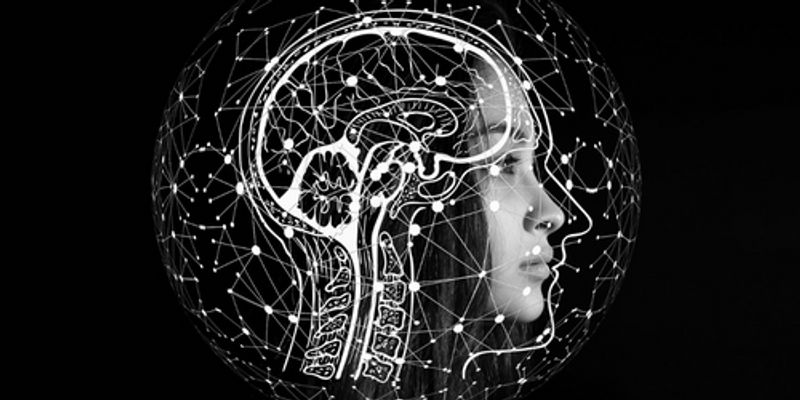CNS neurophysiology
Central nervous system (CNS) neurophysiology includes the study and function of the components of the CNS, including the brain, neurons, glia, and neural networks. Neurophysiology specially focuses on the function of the CNS and not the anatomy.
-
MAR 19, 2014 | 1:00 PMATP-binding cassette transporter A1 (ABCA1) mediates cholesterol efflux to lipid-free apolipoproteins such as apolipoprotein A-I (apoA-I) and apolipoprotein E (apoE). ABCA1 is essential regul...MAR 19, 2014 | 1:00 PMThe Willerth lab investigates how to engineer neural tissue by combining pluripotent stem cells, controlled drug delivery and biomaterial scaffolds. When generating these replacement tissues,...MAR 19, 2014 | 12:00 PMAxonal growth and pathfinding is fundamental to the development and regeneration of the nervous system. Src tyrosine kinase has been implicated in this process; however, the detailed molecula...MAR 19, 2014 | 12:00 PMSynaptic dysfunction and loss caused by age-dependent accumulation of synaptotoxic Amyloid beta (Abeta)1-42 oligomers is proposed to underlie cognitive decline in Alzheimers disease (AD). Syn...MAR 19, 2014 | 12:00 PM......
MAR 19, 2014 | 10:00 AM
Neuron-glial interactions are increasingly recognized as being key for physiological and pathological processes in the central nervous system. Microglia have been found to play a causal role...
MAR 19, 2014 | 10:00 AM
We present a personalized medicine suite of software applications developed at UCSF for multiple sclerosis (MS): the MS Bioscreen. This new tool addresses the challenges of the dynamic manage...
MAR 19, 2014 | 10:00 AM
Discrimination against women has typically been attributed to hostile and demeaning stereotypes about womens capabilities. However, a growing body of evidence shows that subjectively positive...
MAR 19, 2014 | 9:00 AM
When speaking of neurodegenerative diseases, average public is not made aware of the true cost that brain related disorders have on annual budget. The true impact on economy is not usually...
MAR 19, 2014 | 9:00 AM
Dendritic spine shape enables sequestering of subcellular components needed for synaptic plasticity, including polyribosomes for local protein synthesis, smooth endoplasmic reticulum (SER) to...
MAR 19, 2014 | 9:00 AM
Multiple Sclerosis is a debilitating neurodegnerative disease of the central nervous system in which the immune system targets and destroys myelin sheaths surrounding axons. Progressive a...
MAR 19, 2014 | 8:00 AM
The Brain Research through Advancing Innovative Neurotechnologies (BRAIN) Initiative is part of a new Presidential focus aimed at revolutionizing our understanding of the human brain. By...
Speaker:
Emery N. Brown, MD, PhD, William Newsome, PhD, Justin Sanchez, PhD, Terrence J Sejnowski, PhD
Presented at: Neuroscience Virtual Event Series 2014
MAR 19, 2014 | 7:00 AM
Multiple Sclerosis (MS) is an autoimmune disease that leads to widespread pathology within the central nervous system (CNS) and is the most common cause of neurologic disability among young a...
MAR 19, 2014 | 7:00 AM
Down syndrome (DS) is a complex multi-system disorder affecting more than 5.8 million individuals around the world and it causes significant physical, psychological, and cognitive abnormaliti...
MAR 19, 2014 | 6:00 AM
In physical systems built with many components, emergent properties, such as magnetism, are often generated from the interactions among these particles. These emergent properties are often in...
MAR 19, 2014 | 1:00 PM
ATP-binding cassette transporter A1 (ABCA1) mediates cholesterol efflux to lipid-free apolipoproteins such as apolipoprotein A-I (apoA-I) and apolipoprotein E (apoE). ABCA1 is essential regul...
MAR 19, 2014 | 1:00 PM
The Willerth lab investigates how to engineer neural tissue by combining pluripotent stem cells, controlled drug delivery and biomaterial scaffolds. When generating these replacement tissues,...
MAR 19, 2014 | 12:00 PM
Axonal growth and pathfinding is fundamental to the development and regeneration of the nervous system. Src tyrosine kinase has been implicated in this process; however, the detailed molecula...
MAR 19, 2014 | 12:00 PM
Synaptic dysfunction and loss caused by age-dependent accumulation of synaptotoxic Amyloid beta (Abeta)1-42 oligomers is proposed to underlie cognitive decline in Alzheimers disease (AD). Syn...
MAR 19, 2014 | 12:00 PM
...
...
MAR 19, 2014 | 10:00 AM
Neuron-glial interactions are increasingly recognized as being key for physiological and pathological processes in the central nervous system. Microglia have been found to play a causal role...
MAR 19, 2014 | 10:00 AM
We present a personalized medicine suite of software applications developed at UCSF for multiple sclerosis (MS): the MS Bioscreen. This new tool addresses the challenges of the dynamic manage...
MAR 19, 2014 | 10:00 AM
Discrimination against women has typically been attributed to hostile and demeaning stereotypes about womens capabilities. However, a growing body of evidence shows that subjectively positive...
MAR 19, 2014 | 9:00 AM
When speaking of neurodegenerative diseases, average public is not made aware of the true cost that brain related disorders have on annual budget. The true impact on economy is not usually...
MAR 19, 2014 | 9:00 AM
Dendritic spine shape enables sequestering of subcellular components needed for synaptic plasticity, including polyribosomes for local protein synthesis, smooth endoplasmic reticulum (SER) to...
MAR 19, 2014 | 9:00 AM
Multiple Sclerosis is a debilitating neurodegnerative disease of the central nervous system in which the immune system targets and destroys myelin sheaths surrounding axons. Progressive a...
MAR 19, 2014 | 8:00 AM
The Brain Research through Advancing Innovative Neurotechnologies (BRAIN) Initiative is part of a new Presidential focus aimed at revolutionizing our understanding of the human brain. By...
Speaker:
Emery N. Brown, MD, PhD, William Newsome, PhD, Justin Sanchez, PhD, Terrence J Sejnowski, PhD
Presented at: Neuroscience Virtual Event Series 2014
MAR 19, 2014 | 7:00 AM
Multiple Sclerosis (MS) is an autoimmune disease that leads to widespread pathology within the central nervous system (CNS) and is the most common cause of neurologic disability among young a...
MAR 19, 2014 | 7:00 AM
Down syndrome (DS) is a complex multi-system disorder affecting more than 5.8 million individuals around the world and it causes significant physical, psychological, and cognitive abnormaliti...
MAR 19, 2014 | 6:00 AM
In physical systems built with many components, emergent properties, such as magnetism, are often generated from the interactions among these particles. These emergent properties are often in...
















